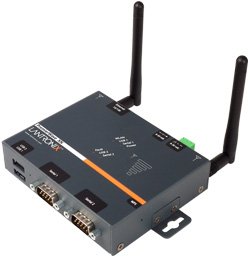Plasma is a phase of matter distinct from solids, liquids, and gases.
It is the most abundant phase of matter in the universe -- both stars
and interstellar dust consist of plasma. Although it is its own phase
of matter, plasma is often referred to as an ionized gas. This is
similar to a normal gas, except that electrons have been stripped from
their respective nucleons and float freely within the plasma. Even if
only 1% of the atoms have lost their electrons, a gas will display
plasma-like behavior.
Plasma is electrically conductive and can be
manipulated by magnetic fields. It can be found in a variety of
everyday contexts, including plasma displays, fluorescent lamps, neon
signs, plasma balls, photolithographic etching machines, flames, lightning, aurora borealis, tesla coils, and more.
Plasmas vary widely. Some parameters used for their classification are the degree of ionization,
temperature, density of the magnetic field, and particle density. For
example, the gas in a candle flame is only very slightly ionized,
whereas the air in the path of a lightning bolt is highly ionized.
Some plasmas are very low temperature, like the intergalactic medium,
while some are very high temperature, like the center of a star.
Unlike gases, which are composed of neutral atoms, charged plasmas
have distinct constituents that behave on their own accord. Free
electrons are negatively charged. The nuclei, lacking electrons, are
positively charged ions. Most plasmas still contain whole atoms which
are electrically neutral as well. Since each of these components can
behave differently in response to changes in external and internal
conditions, a variety of complex wave-like phenomena can emerge.
Plasma phenomena can be observed safely in your own home with the use of a plasma ball. A plasma ball runs an electric field
through a charged gas contained within a glass globe. When a person
touches the edge of the globe, the plasma responds by sending out
visible filaments to the person's finger, demonstrating the tendency of
an electric charge to "ground" itself. Complex, fractal patterns can be
seen within the ball.
Because plasma can be contained by magnetic fields, it can be made
very hot without diffusing heat into a surrounding medium. Plasmas
measuring millions of degrees Kelvin have been produced in tokamak reactors, donut-shaped plasma traps. In the not-too-distant future, we may regularly use superheated plasmas to initiate nuclear fusion reactions that produce large amounts of power.
Just Hit The Share Button It Doesn't Bite Your Finger
Subscribe to:
Post Comments (Atom)
-
Hi Guys Today Its About On line buying, there are lots of risks when you buy on line on different websites, in different Countries, fa...
-
Working with Groups of Worksheets Grouping your worksheets can help improve consistency and save time. Once sheets are grouped, you can...
-
Challenge: The customer – a Fortune 500 organization, who is in the business of theme parks, with thousands of acres of plants, g...



No comments:
Post a Comment